As many of you may know, today – March 2nd – is World Book Day. Typically this is a day mostly celebrated by school children, often as an excuse to dress up as favourite book characters. As such, I decided that today’s blog post should be dedicated in its honour. Due to the nature of books, there are a thousand topics I could choose to write about. I decided to write this one on the history of ‘firsts’ in the book world across human history. So let us begin at the beginning!

According to Wikipedia: “It is generally agreed that true writing of language (not only numbers) was invented independently in at least two places: Mesopotamia (specifically, ancient Sumer) around 3200 BC and Mesoamerica around 900 BC. Several Mesoamerican scripts are known, the oldest being from the Olmec or Zapotec of Mexico.” So, humans have been writing for a very, very long time. When did just writing turn into something more, that we would recognise as a ‘book’, though?
The Epic of Gilgamesh is an epic poem from ancient Mesopotamia that is generally seen as the earliest surviving great work of literature. The first surviving version of this combined epic, known as the “Old Babylonian” version, dates to the 18th century BC – so nearly 4,000 years ago. The earliest known Sumerian poems, which were individual stories rather than one big epic like Gilgamesh, date as early as the 21st century BC. The Epic of Gilgamesh, however, is the earliest text we have that we could consider an actual ‘book’. The Gilgamesh was first “printed” on stone tablets, and there are noted parallels with stories in the Bible, such as the Garden of Eden and the Great Flood.
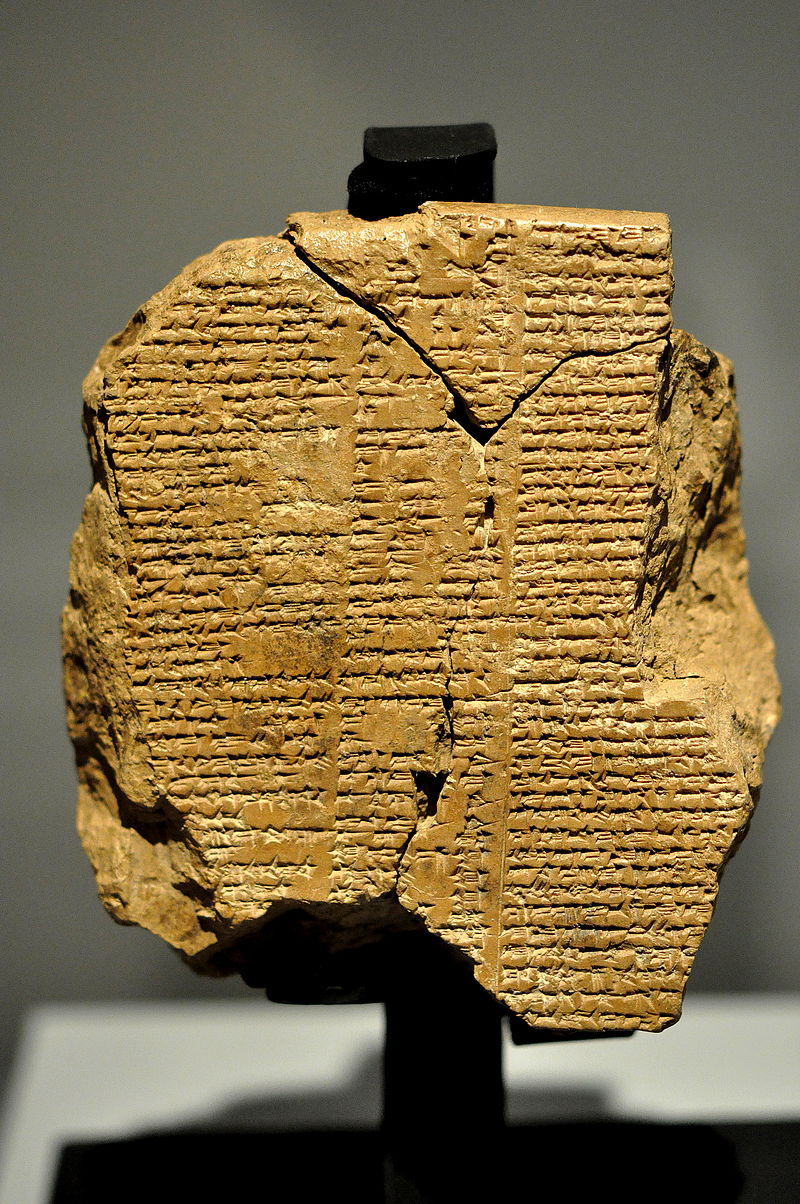
Tablet V of the Epic of Gilgamesh, The Sulaymaniyah Museum, Iraq, WikiCommons
Although some scholars consider the Gilgamesh to be a religious text, the Rig Veda of ancient Hinduism is estimated to have been composed between 1700–1100 BC, which makes it one of the oldest known religious texts. This also makes it one of the oldest written religious texts which is still actively used in religious practice today.
Once the written word began to spread and become more commonplace, examples of writing can be found across different parts of society. Clay tablets were a popular way to record writing, and of course in Egypt the famous papyrus meant that writing proliferated. As the government and religious institutions began writing and recording important information, it of course eventually became necessary for libraries to be created.
The earliest discovered private archives were kept at Ugarit from around 1200 BC, but there is evidence of libraries at Nippur around 1900 BC. The Royal Library of Ashurbanipal was in Nineveh, the capital of Assyria, and was discovered containing over 30,000 clay tablets from the 7th century BC. The tablets cover many aspects of Mesopotamian literary, religious and administrative work, and the library is also where some of the best copies of the Gilgamesh come from.
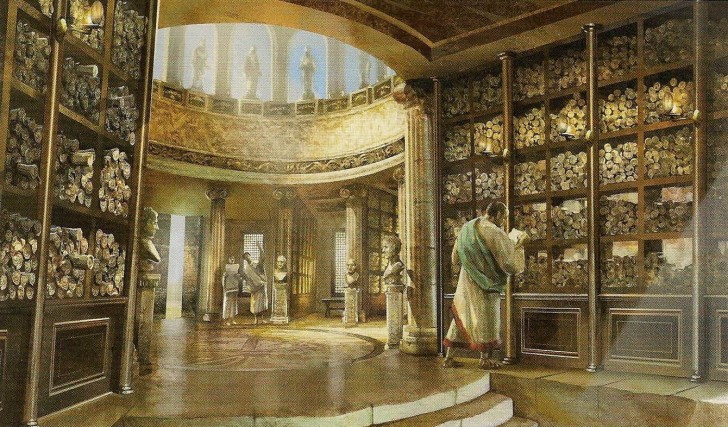
An imagining of the Library of Alexandria
The Royal Library of Alexandria was one of the largest and most significant libraries of the ancient world. Most of the books were kept as papyrus scrolls, and whilst we don’t know exactly how many scrolls were housed at any given time, estimates range from 40,000 to 400,000 at its height. Mark Antony supposedly gave Cleopatra over 200,000 scrolls for the library as a wedding gift, although some historians suspect this was a propaganda claim to show Antony’s allegiance to Egypt. The library held works in mathematics, astronomy, physics, natural sciences and other subjects. Infamously, the library burnt down, destroying all of the ancient knowledge collected within its walls, though in reality we are not sure precisely when it was destroyed or by whom. It seems several events across the centuries steadily led to its destruction, and the main part of the library was certainly destroyed by the taking of the city by the Emperor Aurelian (AD 270–275). As it had been built some time in the third century BC, it had managed to last around six centuries.
To skip forwards a millennium or so, we next stop in medieval France. Christine de Pisan is one of the most famous medieval writers, more so as a female in a male-dominated world. She is often hailed as one of the early feminists, as many of her texts focused on women’s contribution to society, arguing for the strength of women and criticising misogynistic texts. Christine was born in 1364 in Venice, the daughter of a court physician and astrologer. She was married at 15 to a French court secretary, but was widowed at 25 and was left to support her mother, a niece, and her two children. Her father had brought her up in a culture of learning, and so she was lucky enough to be a very educated woman. To support herself and her family, Christine turned to writing, and by 1393 she was writing love ballads. Between 1393 and 1412, she composed over 300 ballads, and many more short poems, but she also wrote two books which became her most famous works: The Book of the City of Ladies and The Treasure of the City of Ladies, both of which focused on women’s contribution to society. Christine de Pisan was a remarkable woman, who I encourage you to read up on, but she features on my list of firsts for a good reason: she is regarded as the first woman in France, and possibly Europe, to earn a living solely by writing. In a period where the rights of women often took a backseat, this was a remarkable achievement. Kings and Queens across Europe sought her out for advice.
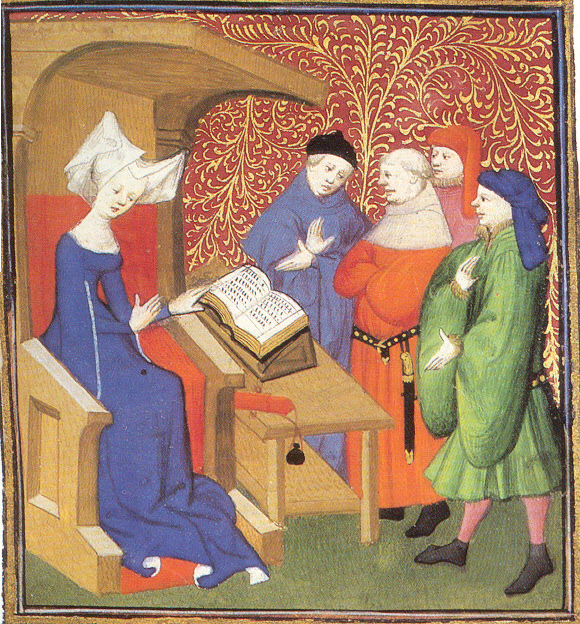
Christine de Pisan lecturing to men, British Library . Harley 4431, f.259v.

Christine presents her book to Isabeau of Bavaria, Queen of France. c.1410-14. Illuminated miniature from The Book of the Queen (various works by Christine de Pizan), BL Harley 4431.
Not long after Christine’s life and career came another first; the first printed book. The printing press was invented in the Holy Roman Empire by a German man, Johannes Gutenberg, around 1440. The first major book that Gutenberg printed with his new machine was the Gutenberg Bible, printed in Germany in the 1450s. It was written in Latin, and is widely praised for its high aesthetic and artistic qualities. 49 copies (or substantial portions of copies) have survived, and they are considered to be among the most valuable books in the world.
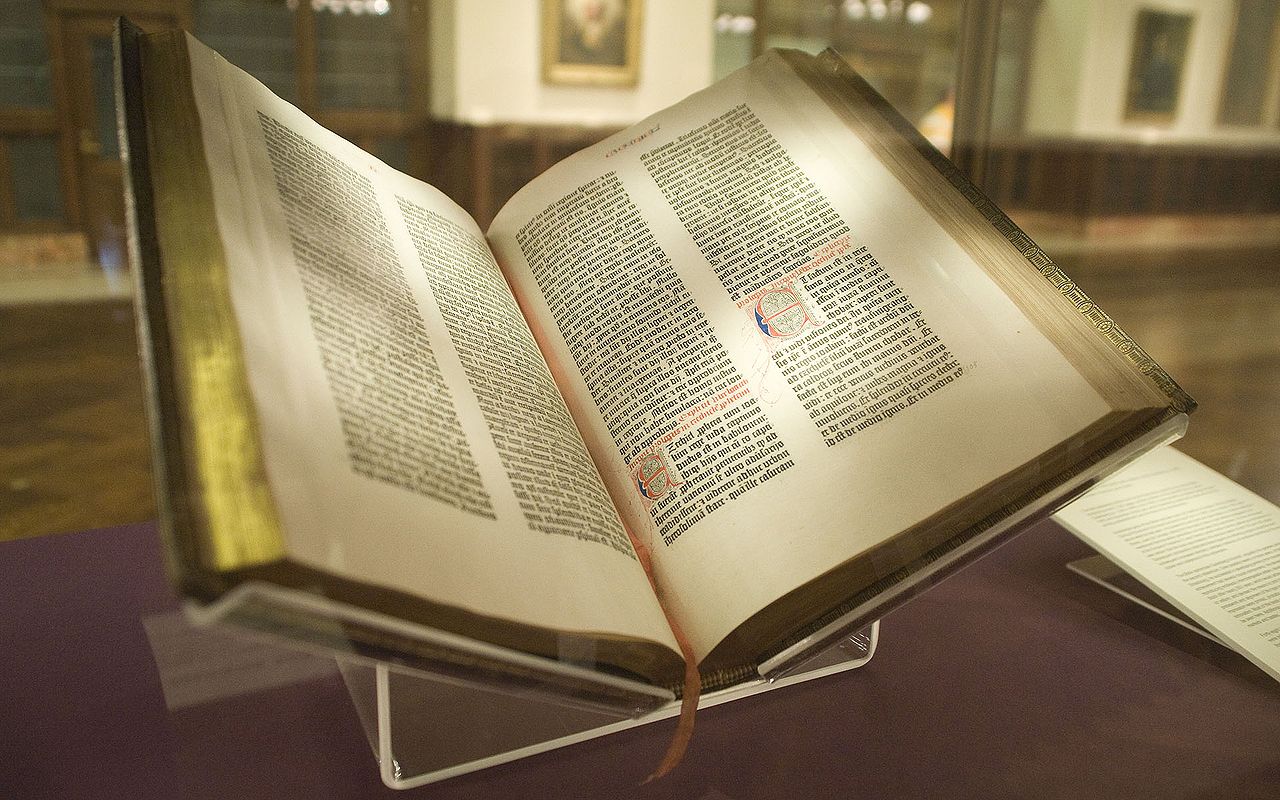
Gutenberg Bible, c.1455. Held at the New York Public Library. WikiCommons
To move forwards another few centuries, we go across to America. In 1761, we find the first known African-American published author in the US. Jupiter Hammon was born a slave in 1711, and his masters encouraged him to go to school. Here, he learnt to read and write and, interestingly, he attended school alongside his masters’ children. In 1761, his poem, “An Evening Thought: Salvation by Christ with Penitential Cries” was published as a broadside. Hammon remained a slave until his death in 1806, although he did promote gradual emancipation, and one of his speeches on the subject was published by New York Quakers, who supported abolition of slavery.

Enjoying this blog post? Buy me a hot chocolate!
Consider donating the cost of a hot chocolate to me, so I can continue to write and run Just History Posts.
£3.50
Not long after Hammon, we find the first published female African-American author. Phillis Wheatley was born in West Africa, but was sold into slavery at the age of 7. The Wheatley family, who purchased her, were considered progressive throughout New England. They gave Phillis an unprecedented education for an enslaved person, and for a woman in general. By the age of 12, Phillis was reading Greek and Latin classics, and the Wheatleys encouraged her when her skill in poetry became evident. In 1773, at the age of 20, Phillis accompanied Nathaniel Wheatley, the owners’ son, to England, as they believed she would have a better chance publishing her poetry there.
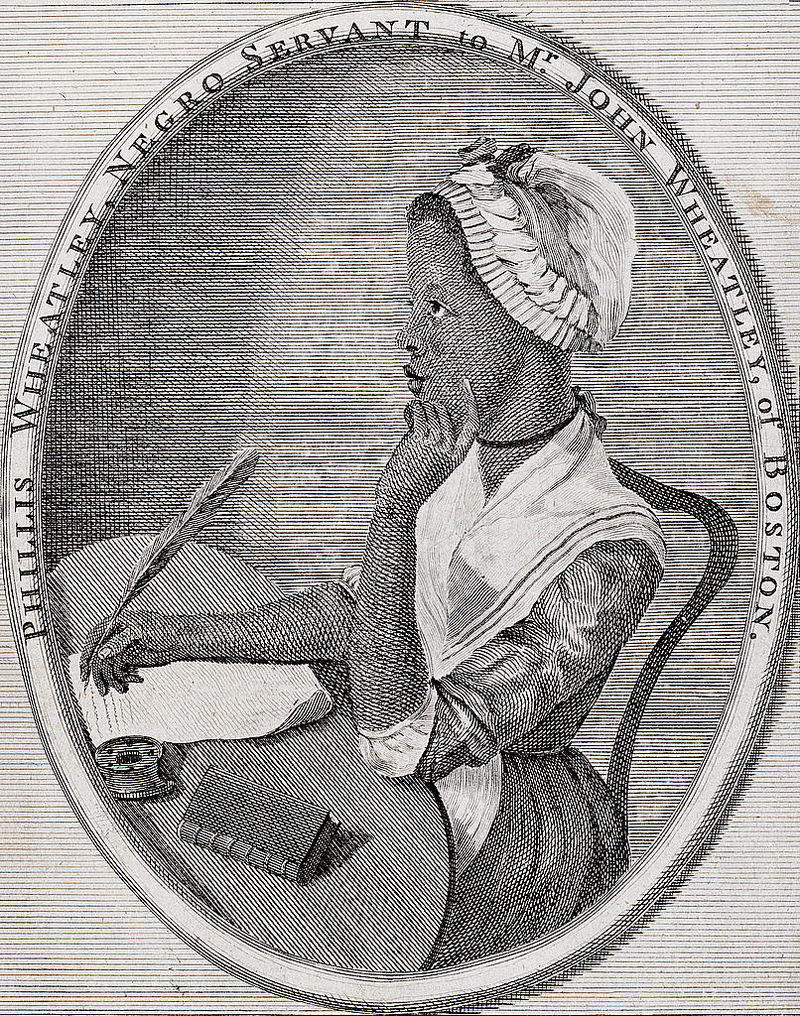
Frontispiece to Phillis Wheatley’s ‘Poems on Various Subjects’. WikiCommons
They were right; the same year, her book Poems on Various Subjects, was published. An audience with George III was arranged, but Phillis returned to America before she could meet him. In 1775, Phillis Wheatley sent a copy of a poem entitled, “To His Excellency, George Washington” to the man himself. In 1776, Washington invited her to visit him at his headquarters in Cambridge, Massachusetts, which she did. In 1778, Wheatley was legally freed from slavery after her master’s death, by the terms of her master’s will, but she had a difficult life thereafter. When her husband was imprisoned for debt in 1784, she was forced to go to work as a scullery maid and she died December 5, 1784, at the age of 31.
So, there is a very brief history of the book! Hopefully somewhere along this whistle-stop tour you will have found something of interest, and perhaps motivation to pick up that book that’s been sitting on your shelf staring at you for months! Happy World Book Day!
Previous Blog Post: How Medieval Medicine is Helping us Today
Previous in Seasonal: Medieval Dating Tips; or, How to bag yourself an eligible Lord or Lady
List of Blog Posts: here Blog Homepage: here
Buy my books via the pictures below! Or why not check out our shop?
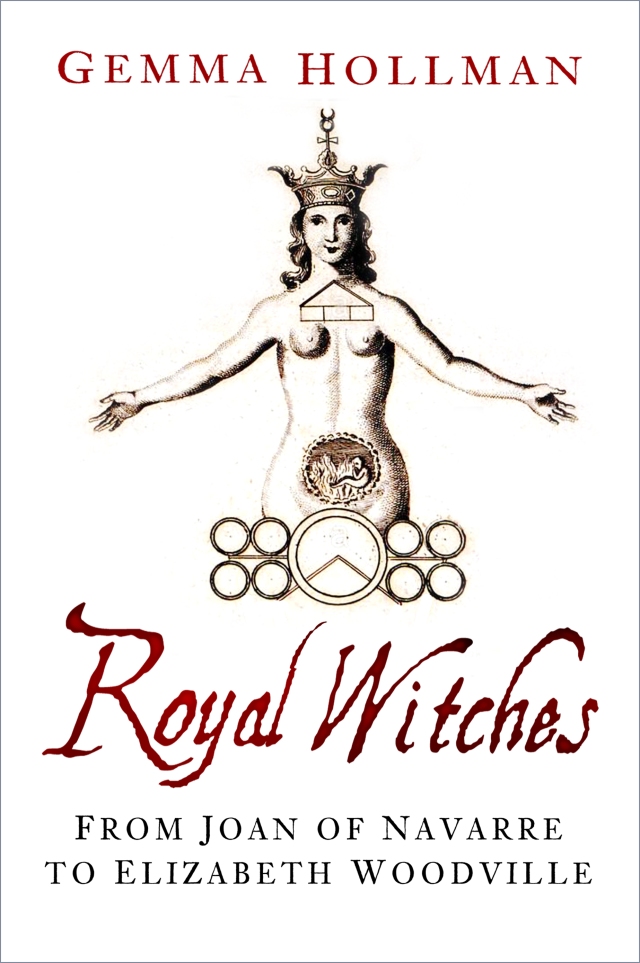
Follow us:


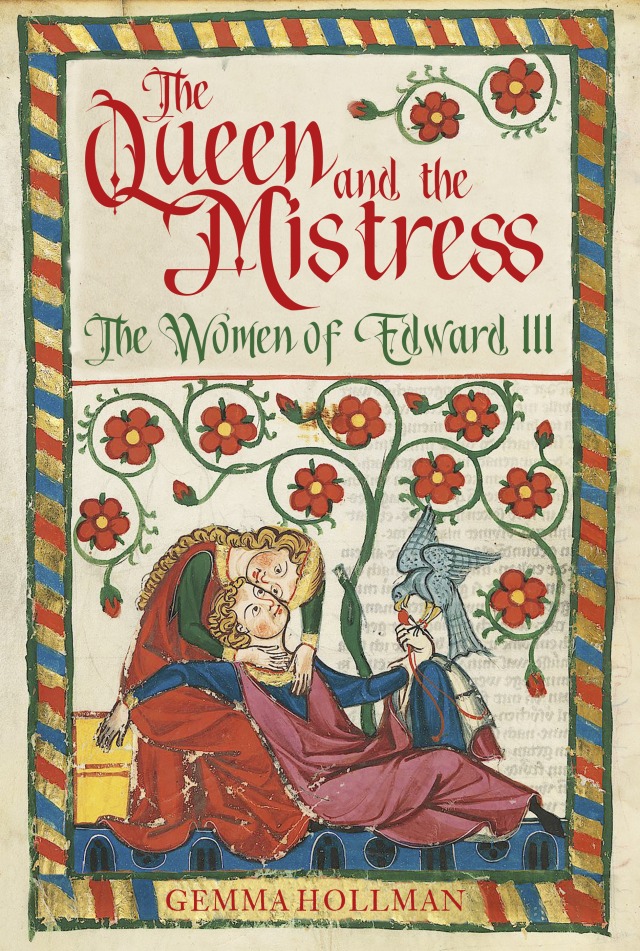



Fascinating! Just popped in to thank you for liking my most recent post. Liked what I found and decided to follow! (If you look under the Hereford and Ireland History tab on my site you’ll find some brief posts about medieval Ireland and the English who invaded.)
LikeLike
Thank you very much!! That’s really interesting, I’ll definitely take a look – Irish history is often overlooked, especially the earlier stuff, which is a shame as it’s equally interesting
LikeLiked by 1 person